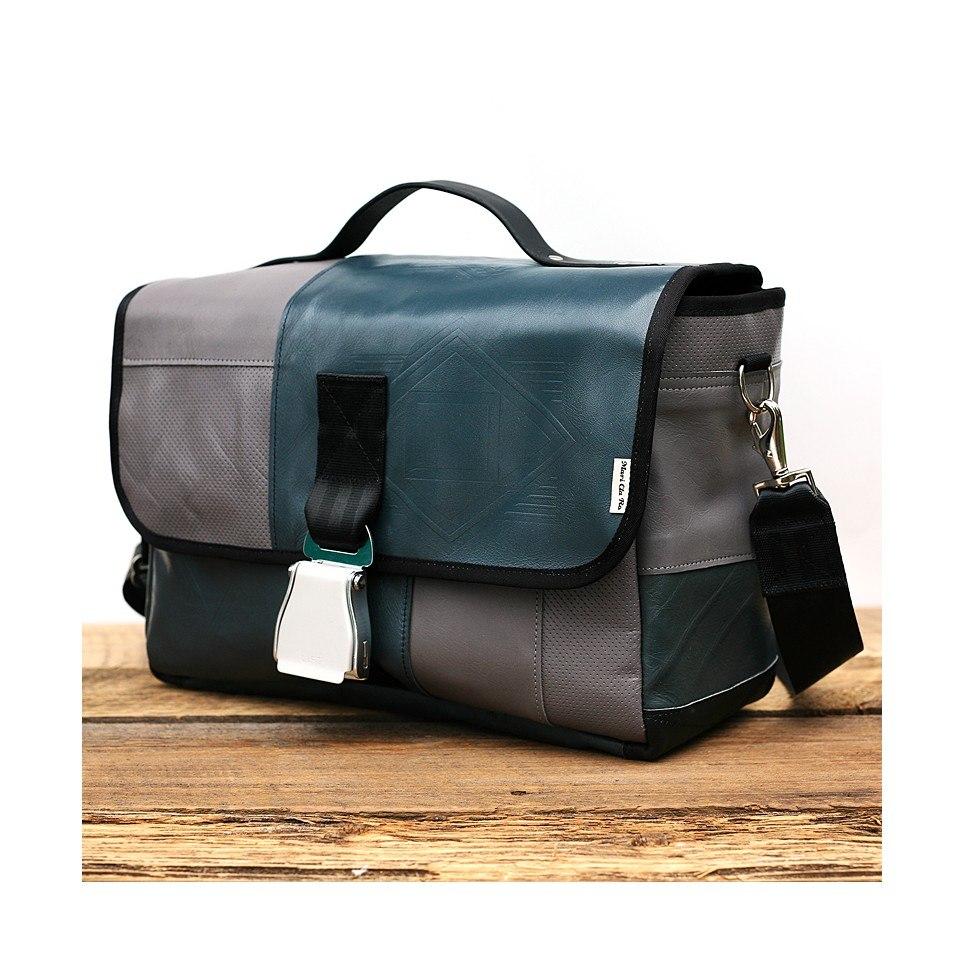
It is not easy for airlines to become sustainable when so much of their impact is due to the amount of jet fuel all those airplanes require. True, new airplanes are becoming more efficient, mostly because of lighter building materials including carbon fiber. But sustainability managers at these companies still have a lot of challenges, including sorting out how to manage mane kinds of waste.
So, when an airline decides to to re-brand or update the interior of its aircraft fleet, the result is a heap of materials that not only consumes space in rapidly-diminishing landfills, but is also expensive to haul away. Alaska Airlines, however, found a solution when the company decided to reupholster more than 6,000 seats within its fleet.
The air carrier’s self-described green team decided to find takers for all of that leather that was still of high quality. After all, airline seat coverings, whether they are leather or synthetic, are processed to withstand the abuse of hundreds of humans a week sitting in them.
To that end, Alaska Airlines distributed unwanted blue, grey and tan leather to 11 different organizations. The company estimated a total of 18,000 pounds (8,200 kilos) of leather was diverted from local landfills. Some went to a Boy Scout troop, some to a prison and much of it ended up with creative designers.
One company is Mariclaro, a Canadian company that repurposed blue and grey leather into satchels, handbags and wallets. Buyers of the dozen or so items Maricloro offers have to be patient—each bag or billfold purchased is custom ordered and takes up to five weeks to complete. Another design house, Looptworks, offers a similar collection of accessories, but uses shades of tan leather it received from the airline. Looptworks estimates the use of recycled leather conserves up to 1,500 gallons of water per item.
Other airlines are hopping on the upcycling bandwagon. Southwest Airlines, for example, also worked with Looptworks on a suite of accessories using leather covering from old airline seats. The “LUV Seat Collection” is still for sale until the end of the year, and was part of what Southwest described as a waste diversion effort that prevented 43 acres of leather from going to landfill.
For Alaska Airlines, its leather recycling initiative is just one part of a fairly proactive agenda to be as as sustainable as possible. The company has experimented with alternative fuels, and claims it is the only U.S.-based air carrier to collect mixed recyclables (as in: aluminum, plastic, glass and paper) on each and every flight. It will be years before alternative fuels can truly have an impact on airlines’ carbon footprint. Nevertheless, Alaska’s programs prove that the aviation industry can do a lot to mitigate its environmental impact.
Image credit: Mariclaro

Leon Kaye has written for 3p since 2010 and become executive editor in 2018. His previous work includes writing for the Guardian as well as other online and print publications. In addition, he's worked in sales executive roles within technology and financial research companies, as well as for a public relations firm, for which he consulted with one of the globe’s leading sustainability initiatives. Currently living in Central California, he’s traveled to 70-plus countries and has lived and worked in South Korea, the United Arab Emirates and Uruguay.
Leon’s an alum of Fresno State, the University of Maryland, Baltimore County and the University of Southern California's Marshall Business School. He enjoys traveling abroad as well as exploring California’s Central Coast and the Sierra Nevadas.














